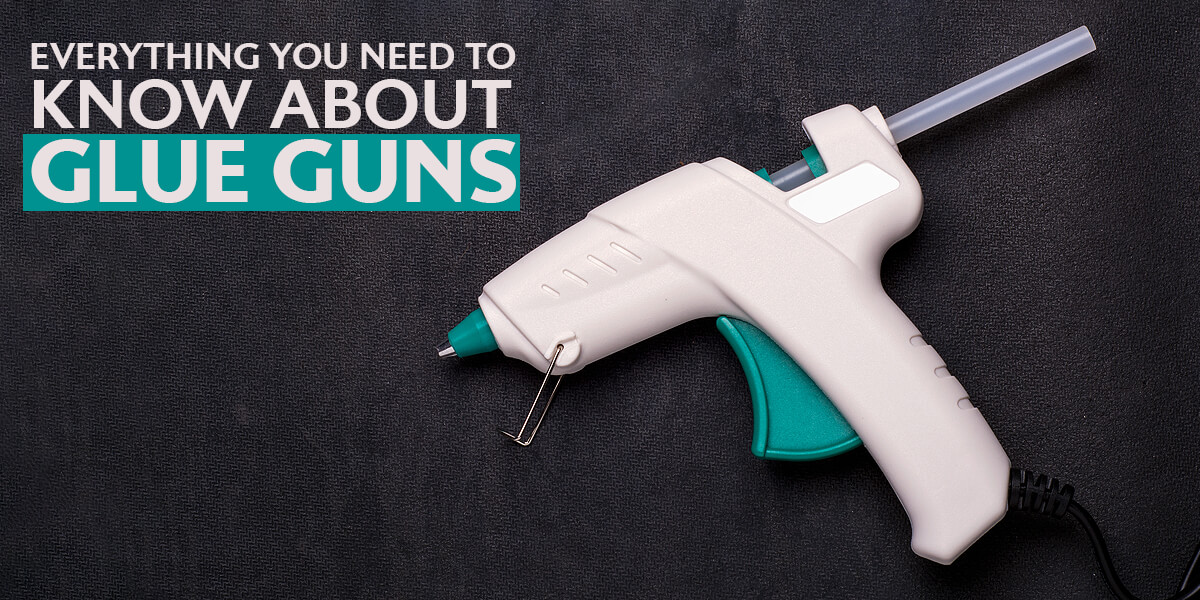
What are Glue Guns Used For?
A hot glue gun is a hand-held device that uses a heating element to heat and melt solid glue. Once the adhesive has melted, it can be directed from the gun's nozzle onto a given object. Glue guns were created for bonding soles to shoes, but today, they are regarded as a staple in toolkits and used by DIY fans, tradesmen, craft workers, and many other professionals in various industries. Hot glue is mouldable and peels away easily, thus making it ideal for temporary fixes.
Here are some examples of DIY hot gun uses:
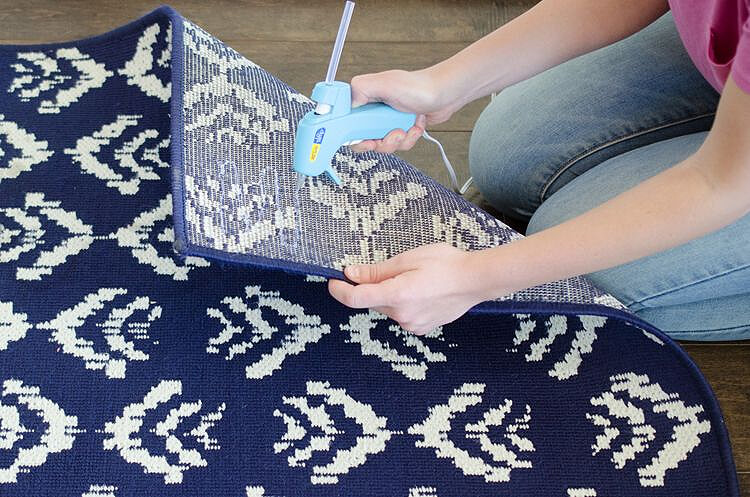
- Add traction to a rug: The synthetic polymers of hot glue sticks have a flexible texture, which makes them perfect for creating a non-slip surface. If you have a rug that tends to slide on the tile or wooden floor, you can prevent accidents by using a handy hot glue gun to add traction to the rug.
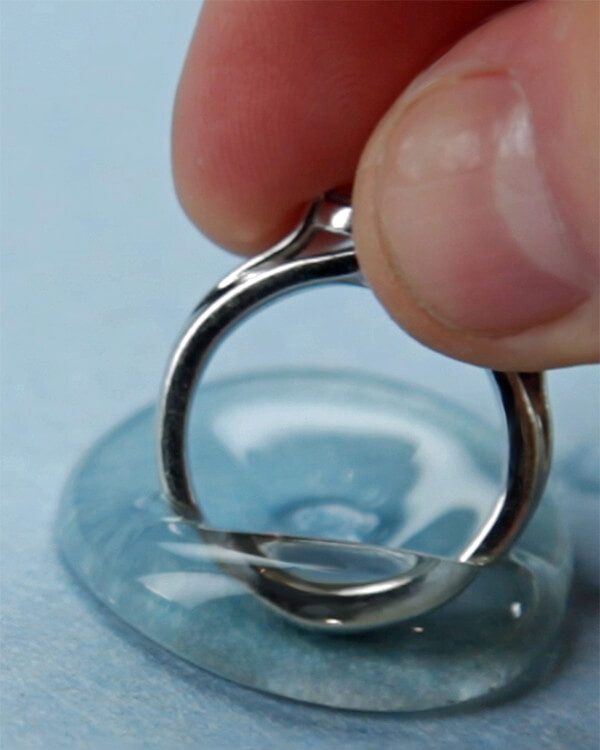
- Temporarily adjust your ring size: Since hot glue is removable, it makes an ideal temporary ring resizer without damaging it. Simply dip the back of the ring into the clear glue and wait until it's dried.
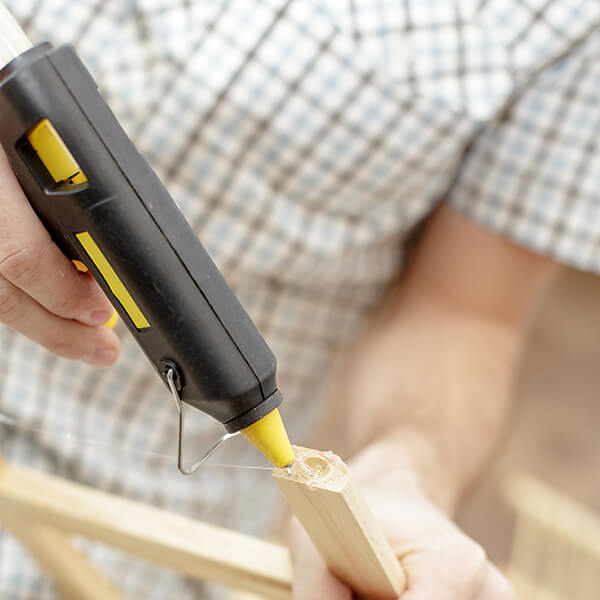
- Woodworking made easy: Hot gun glue is a must-have tool in any workshop. Since the adhesion of a gun glue is relatively low, it can easily be used in many different woodworking tasks, such as holding wood joints. Unlike wood glue, which takes a long time to dry, hot glue hardens within minutes, so you can easily clamp two wood joints together. When the work is done, use a chisel to remove any residue glue spots.
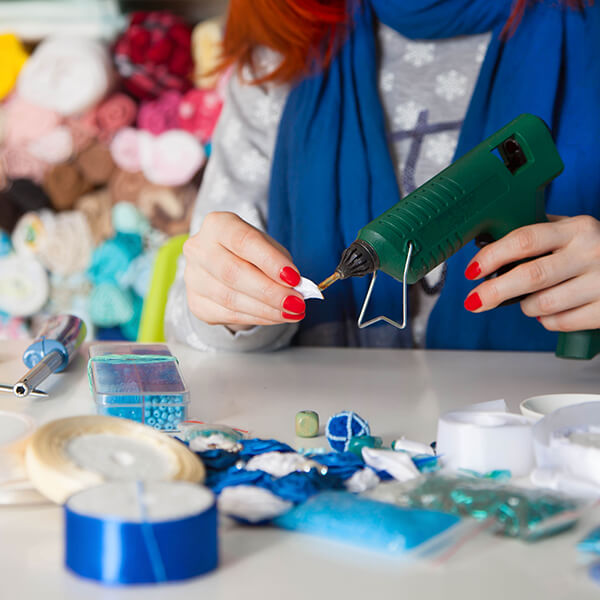
- General repairs: hot glue also makes a great repair option for broken toys, glasses, and books. For example, if you want to repair a book, apply a few lines of glue to the edge of the book's pages and hold it firmly for proper bonding.
How do Glue Guns Work?
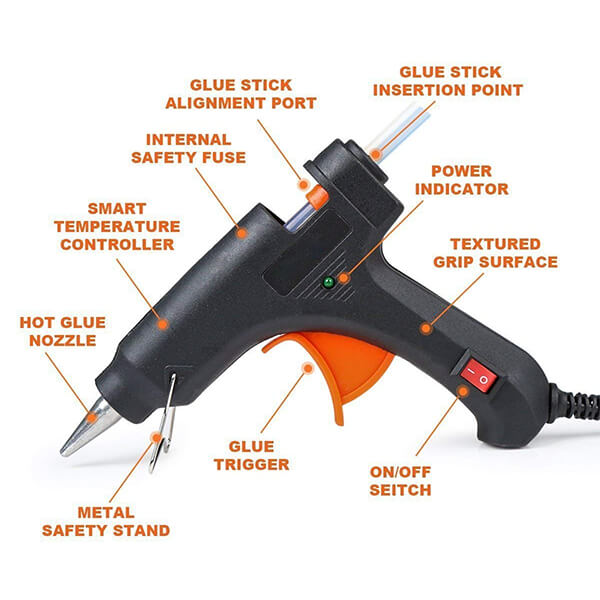
The hot glue is pushed through the back of the device manually or by pulling a trigger . The check valve, which activates the glue, is spring-loaded with balls that can be found right behind the nozzle. The melting process generally takes around 1 or 2 minutes. The glue is discharged from a nozzle that's typically made of metal.
The dispensed glue is in thin strips, so once it's expelled from the gun, it can take just a couple of minutes to dry and harden. This adhesive is extremely hot, so be sure to wear gloves when handling the device. Some glue guns feature protective encasings on their nozzles to prevent burns.
How Much Do Glue Guns Cost?
If you only need a basic model for your craftwork or outdoor job, expect to pay as little as £25 for a 20-watt glue gun. The heating time of the device is around 1.5 minutes, and it will work for up to 12 minutes with a quick heat temperature of up to 120 degrees Celsius.
For professional and more complicated tasks, you'll need a 200-watt glue gun that costs around £60. Such glue guns are ready to use in just 60 seconds and can handle all types of DIY projects.
Where Are Glue Guns Used?
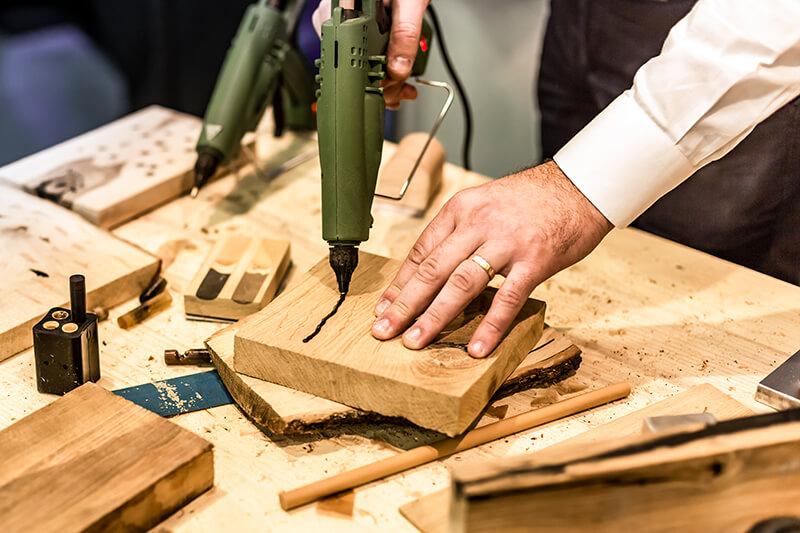
- In industrial settings, glue guns prove to be advantageous over solvent-based adhesives. Since hot glue can dry and cure quickly, it reduces the delay time. Industrial hot glue applications have a long shelf life, and hot melts can be disposed of without any special precautions.
- Aside from industrial uses of hot glue, glue guns are used in small joint attachments, surface lamination, and other product assembly applications in appliances, HVAC units, and mattresses.
- Glue guns can also be used to adhere to small joints in furniture assembly and woodworking projects. Hot glue bonds very well with materials like MDF, laminate, foam, wood, fabrics, and particle boards.
- The packaging industry uses this device to close or seal cardboard boxes or packages.
- Electronics manufacturers have been using industrial glue guns for many years now to assemble wiring, secure components and bond equipment.
How To Use A Hot Glue Gun?

Now that you know how a glue gun works and its uses, it's time to start sticking! Follow these easy step-by-step instructions on how to use a hot glue gun:
- Step 1: Start by preparing the area you'll be working in. Use a drip mat to prevent excess glue from damaging the floor or other surfaces.
- Step 2: Once your work area is ready, the next step is to insert a glue stick in the gun and turn it until it reaches the desired temperature. It will typically take as little as a minute for the glue to get hot.
- Step 3: While you wait for the glue gun to reach the right temperature, use the time to prepare the items you wish to glue. Make sure all the surfaces are completely dry and free from dust, grease, or other debris.
- Step 4: Now that everything is prepared, it's time to apply the hot glue. It is advisable to do a patch test first before applying the glue directly on the surface. Hold the nozzle over the drip mat and gently squeeze the trigger of the glue gun until the glue starts dispensing on the test patch. It should be a smooth and consistent flow. If you don't get the desired result, check the heating element of the gun and look for loose wires. If all is well, you can use the glue gun on the actual surface you want to work on. Move the glue gun along the length of the surface and ease the trigger as you reach the end.
- Step 5: So how long does it take for the hot glue to dry? Allow 10 minutes to ensure the glue has adequate time to set before moving the object you are working on. But if you're not pressed for time, it is best to allow 12 hours for the glue to harden.
- Step 6: Now time for the finishing touches. After applying the glue to the surface, place the glue gun in an upright position over the drip mat. And that's it!
How To Remove Glue Gun Glue From Plastic
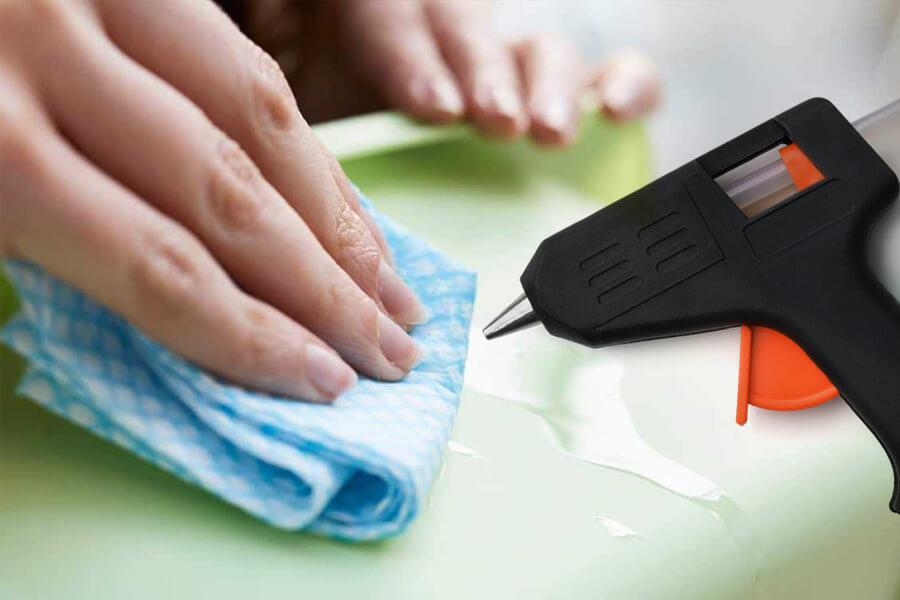
If you have used your glue gun on a plastic surface or object but want it removed now, there are some methods you can try to remove the adhesive. Here are a few suggestions:
- Removing glue from plastic: Soak a cloth in vegetable oil or olive oil and dab it generously on the patch. Allow the oil to absorb in before wiping the surface firmly with a clean cloth or paper towel.
- A quick-fix method of removing glue from plastic: Acetone helps break down the solvents and remove glue residue. Dab cotton wool in the nail varnish remover and gently swab the glue mark in a circular motion.
- How to remove stubborn glue marks from plastic: Soak the glue with white vinegar and rinse clean. If the glue is hard, use a scraper, such as a spatula, blunt knife, or even an old credit card to scrape off the glue from the plastic surface.
Related Articles
Category
Doors & WindowsPosted On
27th February 2025



